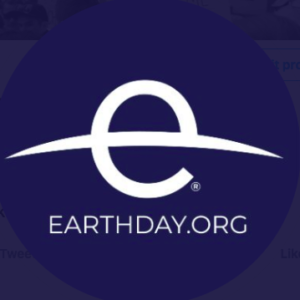Green Cities
Week in Review: Environmental News for Oct. 6-12
October 12, 2018
Less than one degree of warming might not sound like much. But the consequences will be enormous. https://t.co/OvKVxgSqbA pic.twitter.com/FkTraUSq6e
— NYT Climate (@nytclimate) October 8, 2018
Hurricane Michael: The hurricane was devastating for Florida and Georgia. Yes, climate change is impacting hurricanes (Pete Vernon, Columbia Journalism Review)“The good news is that some of the kinds of actions that would be needed to limit global warming to 1.5ºC are already underway around the world, but they would need to accelerate” Valerie Masson-Delmotte, Co-Chair WGI#sr15 #ipcc #climatechange pic.twitter.com/3ohN5uhrOR
— IPCC (@IPCC_CH) October 8, 2018
#HurricaneMichael intensified as the storm made landfall near Mexico Beach, Florida, at around 1:30 p.m. ET. @NOAA‘s #GOESEast satellite captured this view of the Cat. 4 hurricane moving ashore. Latest updates from @NHC_Atlantic: https://t.co/gcFrOMm2RR pic.twitter.com/ZIqmQslbYP
— NOAA Satellites (@NOAASatellites) October 10, 2018
Michael could be a billion-dollar disaster for Georgia agriculture alone https://t.co/SWSBg5UeLO pic.twitter.com/nbO19u7Gxd
— Brian L Kahn (@blkahn) October 12, 2018
Local Climate Action: Washington, D.C. aims to adopt one of the U.S.’s most aggressive plans to reduce carbon emissions, with legislation to shift to renewable sources of energy for the city’s power grid in 14 years. (Peter Jamison, The Washington Post)Bay Medical Sacred Heart, Panama City’s largest hospital, has to reshuffle patients during #HurricaneMichael‘s strike due to roof damage + broken windows. The hospital is now evacuating patients, per @nytimes.
Here are before and after pictures, via @NOAA pic.twitter.com/cOeWvd26RO — Zahra Hirji (@Zhirji28) October 12, 2018
The bill — which would also enhance the city’s green building standards and authorize the mayor to enter regional agreements with Virginia and Maryland to cut greenhouse gas emissions — comes at a moment of international reckoning with the problem of climate change…More…Rising Cost of Disasters: An investigation into how FEMA spends funds on recovery efforts shows a near-sighted vision causing a cycle of damage and repair. (Kevin Sack and John Schwartz, The New York Times)
FEMA’s public assistance program has provided at least $81 billion in this manner to state, territorial and local governments in response to disasters declared since 1992, according to a New York Times analysis of federal data. But an examination of projects across the country’s ever-expanding flood zones reveals that decisions to rebuild in place, often made seemingly in defiance of climate change, have at times left structures just as defenseless against the next storm… More…Court Ruling on Toxins: First, Brett Kavanaugh was sworn in as Supreme Court justice. Then, the Supreme Court let stand a lower court ruling to allow the continued use of hydrofluorocarbons (HFCs) in consumer products. (Mark Hand, Think Progress)
An Obama-era rule limiting the use of HFCs was struck down by the U.S. Court of Appeals for the District of Columbia Circuit — in an opinion authored by then-D.C. Circuit Judge Brett Kavanaugh — in August 2017. Kavanaugh, who was sworn in as a Supreme Court justice on Saturday despite facing numerous allegations of sexual misconduct, did not participate in the Supreme Court deliberations in the HFC case, Honeywell v. Mexichem Fluor…. More…More Plastic Straw Bans: The Barclays Center, home to the The Nets and Islanders. (Bloomberg) The Latest from the EPA: The Environmental Protection Agency’s own Office of the Science Advisor was left out of discussions about EPA efforts to limit the kinds of scientific studies used in protecting public health. (Steven Mufson and Chris Mooney, The Washington Post)
The proposed rule, dubbed “Strengthening Transparency in Regulatory Science,” has ranked as one of conservatives’ top priorities for years. It would allow the EPA to consider only studies for which the underlying data is publicly available and can be reproduced by other researchers. Such restrictions could alter how the agency protects Americans from toxic chemicals, air pollution, radiation and other health risks, adding to the agency’s broader deregulatory agenda… More…“Dead kittiwakes, dwindling fish and oceans of plastic: my voyage of discovery” (Kevin Rushby, The Guardian)
…kittiwake numbers are in decline again and this time the causes are less visible, but no less of human fault. British seas have warmed and that has reduced the sand eel population, a particularly bad development for surface-feeders like the kittiwake…. More…
